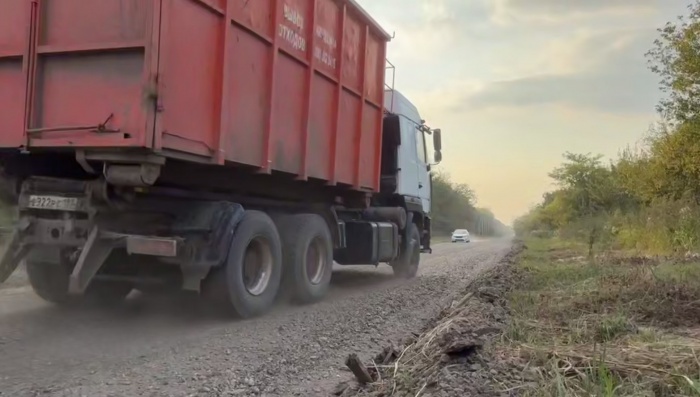Krasnodar The Postal Route in Krasnodar has been restored and is now open for traffic. This was announced by the head of Krasnodar.
— For the first time in many years, we have restored the Postal Route and opened it for traffic. This road is important not only for residents of the Kopansky and Novy settlements. It will also ease congestion on the Western Bypass, providing access to the landfill for vehicles and the New Cemetery.
More than six kilometers of the road up to the Western Bypass have been covered with gravel, and asphalt paving will follow. The work is being carried out as part of the regional road infrastructure development program “25/35.”
Currently, reconstruction is underway on the Western Bypass from the “Lenta” shopping center to the “German Village” and from the “German Village” to Srednyaya Street. Repairs have also been completed on the gravel section from Krasnykh Partizan Street to the reconstructed area.
The total length of the road is approximately 12 km, stretching from the Kopansky settlement to the Western Bypass.
Postal Route
The Postal Route refers to historic mail delivery paths that were crucial for communication before modern transportation. One famous example is the *Thurn and Taxis* network in Europe (16th–19th centuries), which established organized postal services across the Holy Roman Empire. These routes laid the groundwork for national postal systems and facilitated cultural and economic exchange.
Western Bypass
The Western Bypass is a major road infrastructure project designed to divert traffic away from urban centers, reducing congestion and improving transportation efficiency. While specific histories vary by location, such bypasses are typically constructed in the mid-to-late 20th or early 21st century to accommodate growing vehicular traffic and support regional development. They often play a key role in connecting highways, industrial zones, or suburban areas while minimizing disruption to city centers.
New Cemetery
The **New Cemetery** (often called *Novo groblje*) in Belgrade, Serbia, was established in 1886 as the city’s main burial ground, replacing older, overcrowded cemeteries. It is known for its historic and artistic tombstones, including the graves of notable Serbian figures like writer **Ivo Andrić** and scientist **Nikola Tesla** (whose remains were later moved to the Tesla Museum). The cemetery also features a memorial to World War I soldiers, reflecting its cultural and historical significance.
Lenta shopping center
The Lenta shopping center is a large Russian retail chain founded in 1993, known for its hypermarket format offering a wide range of groceries, household goods, and electronics. Initially established in St. Petersburg, Lenta expanded across Russia, becoming one of the country’s leading retail brands. The stores are designed for bulk shopping, often featuring warehouse-style layouts and competitive pricing.
German Village
German Village is a historic neighborhood in Columbus, Ohio, founded in the early-to-mid-19th century by German immigrants. Known for its well-preserved brick houses, cobblestone streets, and charming shops, it reflects the cultural heritage of its early settlers. After a period of decline, it was revitalized in the 1960s and is now a vibrant community with restaurants, breweries, and cultural events celebrating its German roots.
Srednyaya Street
Srednyaya Street (Средняя улица) is a historic street located in the Vasilyevsky Island district of St. Petersburg, Russia. Dating back to the early 18th century, it was part of Peter the Great’s original grid plan for the city and was named for its position as the “middle” street among three parallel avenues. Today, it retains a mix of 19th-century residential buildings and serves as a quiet, picturesque example of St. Petersburg’s imperial-era urban design.
Krasnykh Partizan Street
Krasnykh Partizan Street (Street of the Red Partisans) is a common street name found in various cities across Russia and former Soviet republics, honoring the communist partisans who fought during the Russian Civil War (1918–1922) and World War II. The name reflects Soviet-era efforts to commemorate revolutionary and anti-fascist resistance movements. Today, these streets often retain their historical names, serving as reminders of the region’s Soviet past.
Kopansky settlement
The Kopansky settlement is an ancient archaeological site located in Ukraine, believed to date back to the Scythian period (7th–3rd centuries BCE). It was part of a network of fortified settlements in the Dnipro River region, reflecting the nomadic and semi-nomadic culture of the Scythians. Excavations have revealed remnants of dwellings, fortifications, and artifacts, offering insights into early Iron Age life in the region.






